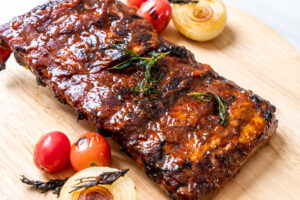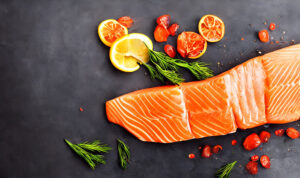
Order your next bottle of Scout & Cellar wine TODAY!
You’ve probably seen rosé pink wine in stores, but you may not be sure what it is. Rosé is made with a blend of red and white grapes and gets its pink color from contact with the grape skins for a limited time. This gives it a light, refreshing taste that’s perfect for summertime sipping. Rosé wine is also relatively low in alcohol, so it’s a good choice if you’re looking for something to drink that won’t give you a buzz. Keep reading to discover some great info about rosé wine!
How Is Rosé Wine Made?
Rosé wine is made by pressing red grapes and then allowing the juice to run off naturally. Only a small amount of color is transferred in this first pressing, so a rosé wine will be light in color.
Some rosé wines are made from white grapes that have been stained with red grape skins for just a short time; others are made from red grapes that have been crushed but not pressed so that the juice mixes with the skins and takes on their pink color.
The type of grape, the length of time the juice is in contact with the skins, and the temperature all affect the final color of the rosé wine.
Rosé wine can be made from any type of grape, but some of the most popular varieties include Grenache, Mourvèdre, Cinsault, and Syrah.
Read more about how wine is made
Where Is Rosé Made?
Rosé wine is usually made from red grapes, although white grapes may also be used. The juice of the red grape is allowed to remain in contact with the skins for a short period of time (usually just a few hours) which gives the wine its pale pink color.
Rosé wines can be found all over the world, but they are especially popular in France and Italy. In fact, Rosé wine accounts for almost half of all the wine consumed in Italy.
Types Of Rosé Wines
There are many types of rosé wines, but they can generally be divided into two categories: still and sparkling.
Still, rosé wines are made from red grapes, but the juice is not allowed to stay in contact with the skins for very long, which gives it its pale pink color. Sparkling rosé wines, on the other hand, are made from white grapes that are pressed and then fermented with the skins on, which gives them their light pink color.
There are also many different styles of rosé wine, ranging from dry to sweet. And while most people think of rosés as being light and refreshing, there are some fuller-bodied examples that can be quite complex.
Different Glasses For Different Wines
Basic Rosé Wine Nutrition Facts
While the nutritional content of rosé wine varies depending on the type and style, all rosé wines are relatively low in calories and carbohydrates. For example, a 5-ounce glass of dry rosé wine contains around 100 calories and 4 grams of carbs.
So, if you’re looking for a low-calorie, low-carb drink option, rosé wine is a good choice.
How To Store And Serve Rosé Wine
Rosé wine can be stored and served in a variety of ways, but the most popular way to store and serve rosé wine is by chilling it in a refrigerator. This will help to keep the wine cold and allow you to drink it at a later time. Additionally, many people like to store rosé wine in a freezer. This will not only keep the wine cold but will also prevent it from going bad. When you are ready to drink the wine, simply remove it from the freezer and let it thaw out for a few minutes before serving.
No matter where or how you choose to store your wine it’s important to ensure it is in an airtight container. Storing wine in a cool, dark place is important for a few reasons. First, light can cause wines to prematurely oxidize, which will give them off aromas and flavors of vinegar or Sherry. Second, high levels of humidity can cause corks to rot and allow oxidation to occur. Third, extreme cold or heat can change the flavor of the wine. For these reasons, it’s important to store wine in a place where it will be relatively cool and dark with low humidity. A wine that is stored in an airtight container will be less likely to experience any negative effects from fluctuations in temperature or humidity levels.
How Long Does Wine Last After Opening the Bottle?
Does Rosé Age Well?
There is no right answer to this question because it varies from wine to wine. However, most rosés are meant to be consumed within a year or two of being bottled. That said, there are some rosés that can be cellared for longer periods of time. It really depends on the specific wine and how well it was made. If you’re unsure if a particular rosé will age well, it’s always best to ask the winemaker or someone who is knowledgeable about wine.
The Essential Guide to Pinot Noir
Glassware For Rosé Wine
There is no one perfect glass for rosé wine. Some people prefer a narrow glass that allows the wine to be swirled easily and releases more of the wine’s aromas, while others prefer a wide glass that allows the wine to breathe more. Ultimately, it’s up to personal preference.
That said, there are a few things to keep in mind when selecting glassware for rosé wines. First and foremost, avoid glasses with stems; they will warm the wine too much and affect its taste. Secondly, make sure the glass is clear (not tinted), as this will allow you to better appreciate the color and nuances of the wine. Finally, make sure that the size of the glass is appropriate for the amount of wine you’ll be drinking. A standard 5-ounce glass is usually sufficient, but if you’re planning on drinking a lot of wine, you may want to use a larger glass.
How Many Calories In Glass Of Red Wine
The Best Food Pairings For Rosé
Rosé wine is the perfect drink for summer. It’s light, refreshing, and has a beautiful pink color that makes it perfect for sipping on a patio or deck. But what should you eat with rosé? Here are some of the best food pairings for this versatile summertime wine:
Grilled salmon:
The light, fruity flavors of rosé are a perfect match for grilled salmon. Try serving your salmon with a simple salad and a glass of chilled rosé for a perfect summertime meal.
Caprese salad:
This classic Italian salad made with tomatoes, mozzarella, and basil is the perfect partner for rosé. The acidity in the tomatoes and the creaminess of the mozzarella balance out the wine perfectly.
Grilled vegetables:
Rosé is also a great choice for grilled vegetables. The smoky flavors of the grill will complement the fruity flavors of the wine. Try grilling up some zucchini, eggplant, and peppers to enjoy with your rosé.
Fruit salad:
A fruit salad is the perfect light dish to enjoy with rosé on a hot summer day. The sweetness of the fruit will balance out the acidity of the wine. Try adding in some berries, melon, and grapes to your salad for a refreshing summertime treat.
Cheese plate:
A cheese plate is always a good idea, and it’s even better when you pair it with rosé. The wine will help to bring out the flavors of the cheese, and the cheese will help to round out the acidity of the wine. Try pairing your rosé with a variety of cheeses, crackers, and fruit for a perfect summertime snack.
Final Thoughts
So, what is rosé wine? Rosé is made with a blend of red and white grapes and gets its pink color from contact with the grape skins for a limited time. This gives it a light, refreshing taste that’s perfect for summertime sipping. Most rosés are meant to be consumed within a year or two of being bottled, but there are some rosés that can be cellared for longer periods of time. It really depends on the specific wine and how well it was made.
When selecting glassware for rosé wines, make sure that the size of the glass is appropriate for the amount of wine you’ll be drinking. A standard 5-ounce glass is usually sufficient, but if you’re planning on drinking a lot of wine, you may want to use a larger glass.
The best food pairings for rosé vary depending on your personal preferences, but some good options include grilled salmon, Caprese salad, grilled vegetables, fruit salad, and cheese plate. So go ahead and enjoy a cold glass of rosé!
Frequently Asked Questions
Q: Is pinot noir made from red wine grapes?
A: Pinot noir is a red wine grape, but it doesn’t make very strong-tasting wine. In fact, many people describe pinot noir wines as being “hissy” because they lack the tannin that other red wine grapes have. This might be part of the reason why pinot noir has become so popular in recent years, as winemakers are looking for grapes that will create a softer, more delicate-tasting wine.
Q: Which grape varietals produce rosé wine?
A: There are many grape varietals that can produce rosé wine, but the most common ones are Grenache, Cinsault, Syrah, Mourvèdre, Carignan, and Tibouren.
Q: What are the major differences between dry red wines, dry rosé wines, and dry white wines?
A: Red wines are made with red grapes, whereas rosé wines can be made with either white or red grapes. The difference in color comes from the fact that red wine is made by leaving the grape skins in contact with the juice for a longer period of time.
White wine is typically fermented at a higher temperature than red wines and rosé wines, and this higher temperature results in more of the sugar in the grape juice being converted into alcohol. As a result, dry white wines will have a higher alcohol content than dry red or rosé wines.
Rosé wines are typically fermented for a shorter period of time than either red or white wines, and this shorter fermentation time results in less color being extracted from the grape skins.
Q: Is Rosé champagne sweet?
A: Rosé champagne is a sparkling wine that is made from a blend of red and white grapes. The wine gets its rosy color from contact with the grape skins, which causes it to have a slightly sweet taste. However, many people find that rosé champagne has a more dry taste than regular champagne.





